- Home
- Tom Clancy
Airborne: A Guided Tour of an Airborne Task Force Page 22
Airborne: A Guided Tour of an Airborne Task Force Read online
Page 22
The twin engines are General Electric TF-34 turbofans mounted in cylindrical pods on short pylons extending up and outboard from the aft section of the fuselage. If one TF-34 is shot away, the A-10 can limp home on the other, as several Hogs did during Desert Storm. The TF-34 was chosen to save on development costs, since it was already in production for the Navy’s S-3 Viking, a carrier-based antisubmarine plane that needed long endurance and the ability to loiter at low-altitude.30 Aircraft designers hate putting a brand-new engine design on a new aircraft type, since experience teaches that this is a common source of development trouble. Each engine is rated at 9,065 1b/4112 kg of thrust, pretty anemic for an aircraft with a maximum takeoff weight of almost 50,000 lb/22,680 kg. Generally, the TF-34 lacks acceleration as well as thrust, and the A-10’s maximum speed at sea level is a modest 439 kn/813.5 kph. Most engines have some design margin for increased thrust during their life cycle, but there was never any money to soup up the TF-34. Turbofans are very fuel-efficient engines, but an equally important consideration for the A-10 is high “bypass ratio,” which mixes a lot of cool air with the hot turbine exhaust, reducing the aircraft’s vulnerability to heat-seeking missiles. Another benefit of the TF-34 is reduced noise; on the ground you cannot hear an A-10 flying above 5,000 feet/1500 meters of altitude.
The purpose of any warplane is to place ordnance onto targets, and the A-10’s design is a classic example of this philosophy. Since the Warthog’s primary mission is CAS, with a special emphasis on destroying heavy armored vehicles (like main battle tanks), the A-10 drew a lot on the lessons of the German JU-87G1 and Russian IL-2 Shturmovik. The A-10’s narrow fuselage was designed around the huge armor-busting General Electric GAU-8 “Avenger” cannon. This is an externally powered seven-barrel rotary 30mm gun, almost 20 feet/6.1 meters long, weighing in at 4,029 1b/1831 kg. The GAU-8’s rotary gun mechanism is based on the 150-year-old Gatling design, but an ingenious “linkless” ammunition-conveyor system makes it possible to fire at a cyclic rate of fifty to seventy rounds per second! Each barrel is 7 feet six inches/2.3 meters long (or to put it in ordnance terms, 76.66 calibers), and the entire GAU-8 system is about the size of a Volkswagen Beetle compact car!31 Viewed from the front, the gun muzzle appears offset slightly to port, giving the nose a peculiar asymmetry, but as the gun assembly rotates, the barrel exactly on the centerline is the one that fires.
The GAU-8 gives the Warthog awesome firepower against ground targets, unlike anything seen since the end of World War II. However, with a magazine capacity of only 1,350 rounds, A-10 pilots must fire short bursts. The standard combat load is a mix of armor-piercing (AP) and high-explosive-incendiary (HEI) shells. The AP round can pierce the top or side armor of most heavy tanks, and in wartime, the A-10 would use depleted-uranium AP projectiles. This is a very dense metal that ignites and burns violently when compressed and heated by a high-velocity impact. “Depleted” uranium has had most of its fissionable U-235 removed, and thus has only a tiny residual radioactivity, but like most other heavy metals it is quite toxic. So, in consideration of environmental concerns, it is being replaced by tungsten alloy projectiles. However you look at it, the GAU-8 “main battery” of the A-10 is an impressive weapon.32
Survivability was at the core of the original A-X specification, and was one of the reasons that Fairchild won the contract. Since most of the aircraft that were lost in Vietnam had been shot down by light AAA fire, the Warthog was specifically hardened against this threat. In the forward fuselage is a “titanium bathtub” surrounding the cockpit to protect the pilot and flight controls. Light as aluminum and stronger than steel, titanium is very difficult to cast or weld, which makes it an expensive luxury in aircraft structures. But the A-X specification required protecting the pilot from cannon shells up to 23mm in caliber, and steel armor would have been far too heavy. Other parts of the Warthog have also been heavily overbuilt, so that they are “ballistically tolerant” to all sorts of different ordnance. This means that they will still function if hit by, say, a 7.62mm machine-gun round, or a fragment from an exploding surface-to-air (SAM) warhead. Virtually every assembly on the A-10 went through some type of ballistic tolerance design and testing, and the results have been proven in combat. To appreciate the toughness of this A-10, consider the experience of one Desert Storm A-10 pilot:A Fairchild Republic A-10A belches muzzle smoke as it fires the internal GAU-8 Avenger 30mm Gatling gun. Firing milk bottle—sized shells with depleted uranium penetrators, the GAU-8 is the most effective anti-armor cannon flying.
OFFICIAL U.S. ARMY PHOTO
“They counted 378 holes in it.... All four shells from a four-round clip of 57mm hit me ... the right engine... had forty-five holes in it—it wasn’t developing full power but it was still running when I landed.... The right side below the cockpit had seventeen major holes in it and the bathtub had a lot of chinks in it....” The aircraft was eventually patched up and flew home to Louisiana!
This pilot’s experience was hardly unique. Other Warthog drivers had their own battle damage experiences during Desert Storm, and usually their “Hogs” brought them safely home to fly and fight another day.
In addition to making the shell of the Warthog’s cockpit tough, the Fairchild-Republic designers made what is inside tolerant to the evils of the CAS environment. In addition to the standard ACES-series ejection seat, the A-10’s cockpit is packed with conventional round instrument dials (humorously called “steam gauges”) rather than the sleek multi-function displays (computer screens) found in contemporary pointy-nosed fast movers like the F-16. Mechanical instruments are far more resistant to shock and other unpleasant effects that the CAS environment commonly throws at your average Hog driver, and thus are the readouts of choice. The one exception to this rule is a small video display where the pilot can view the scene through the electro-optical or infrared seeker head of a selected AGM-65 Maverick missile.
Like everything else on the Hog, the controls on the A-10 are utterly conventional. A normal-looking control stick between the pilot’s legs and a twin throttle console on the left tell you that this is not one of the sexy “fly-by-wire” fighters like the F-16 or F-18. One unusual control is a lever that engages “manual reversion” of the flight controls, if both hydraulic systems are knocked out.33 This allows the pilot to fly the aircraft with pure muscle power through cables and pulleys, which can be an exhausting struggle in rough weather. Perhaps the one modern feature of the Hog’s cockpit is the bubble canopy, which gives the pilot a superb view of the battlefield, a vital necessity for CAS/FAC operations.
The outside of the A-10 appears to be randomly festooned with all variety of lumps and bumps. Each item, though, is designed to add to the functionality of the A-10 in CAS operations. Above the gun and forward of the bubble canopy is a receptacle for in-flight refueling from USAF tankers. In combat, A-10 squadrons will usually be based as close to the front line as possible, but in-flight refueling makes it possible for units based in the United States to carry out grueling marathon flights (thirteen hours or more) to deploy nonstop to remote overseas trouble spots. There is no room inside the nose for any kind of radar, but there is a pylon on the starboard forward fuselage for a laser-spot target seeker, the AAS-35 Pave Penny pod. While unable to project a laser spot to designate targets for laser-guided weapons itself, the Pave Penny can detect the laser spots from other designators, providing a steering cue to the pilot. This allows the Warthog driver to attack a target marked by troops on the ground with a designator, or by an airborne designator from a helicopter (like the Army OH-58D or Marine AH-1W) or other aircraft (such as an F-15E or F-16C with LANTRIN pods). This is only done rarely, as the A-10’s weapons load is mostly made up of unguided iron and cluster bombs, as well as fire-and-forget AGM-65 Maverick air-to-ground missiles.
Although the numerous underwing hardpoints can accommodate almost any kind of ordnance owned by the USAF, you won’t find much hanging here that is guided. The sexier and more expensive Paveway-series laser-g
uided bombs (LGBs) or the GBU-15/AGM-130-series electro-optical guided bombs and missiles are reserved for the supersonic members of the USAF Air Combat Command (ACC).7 The Warthog community views its primary weapons as the mighty GAU-8 gun, unguided bombs (like the Mk 80-series “iron” bombs, and CBU-87/89/97ries cluster weapons), 2.75-in/ 70mm rockets, and the AGM-65 Maverick AGM. Currently, the Imaging Infrared (IIR) -D and -G versions are the favorites, given their excellent seeker heads (which use the thermal signature of a target to home in on) as well as their large warheads. In fact, because the Maverick’s seeker head is based upon a staring matrix array of infrared detectors, as opposed to a single detector element like the AIM-9 Sidewinder air-to-air missile (AAM), it actually “sees” an image of the target. This image is fed onto the cockpit display screen we mentioned earlier, so that it can be used to “lock” the seeker head of the missile onto a target.
During Desert Storm, Warthog crews found that they could power up an IIR Maverick on the rail (A-10s usually carry two or three AGM-65s on each of a pair of three-rail launchers), and use the seeker as a “poor man’s” thermal imager or forward-looking infrared (FLIR) scanner. Given this rudimentary capability, Hog drivers were able to develop night intruder tactics for operations after dark.
The one other guided weapon carried by the A-10 is the AIM-9M Sidewinder AAM, which is carried for self-defense against fighters and for shooting down the odd helicopter that may get in the way.34
The tail of the A-10 consists of a broad horizontal stabilizer with a huge slab-sided vertical stabilizer with a rudder at each end. It was here that the ballistic tolerance in the Warthog design was taken to extremes. Either side of the tailplane can be shot away, and the A-10 will still be able to fly home! Also, the arrangement of the tail surface tends to shield the hot engine exhaust ducts from the view of ground-based observers, making it harder for a heat-seeking SAM to track the aircraft. Another thing that helps keep the Hog flying is that as much as possible, components of the A-10 are designed to be interchangeable between left and right (and between different aircraft). This enables repair crews to patch together one flyable Warthog from two or more damaged ones. This is just more of the whole “toughness” mentality that permeates the whole A-10 design from nose to tail.
Toughness is not just a characteristic of the A-10 and their pilots, though. It shows in how those ground crews service and support the Warthogs. There once was an aircrew joke about the ground technicians spreading corn on the ramp to “bring the hogs in at night.” However, every A-10 driver will tell you that it is those same skilled maintenance technicians that keep the Warthog fleet flying in the forward field conditions that it was designed to work from. The original concept of operations (CONOPS) for the A-10 was to have them spread out from a central home base, and then operate from forward operating bases (FOBs) that could be anything from a dirt airstrip to a section of the Autobahn. Small detachments of maintenance personnel would then go forward to refuel and rearm the big jets, and support any rapid repairs of equipment or battle damage that might occur. To this end, the A-10 was designed to be easy to support in the field. The aircraft has its own auxiliary power unit (APU, a miniature turbine engine buried in the aft fuselage), so it requires no external starter cart. There is even a telescoping retractable ladder built into the side of the fuselage, so the pilot can mount his steed without outside assistance.
So just what is involved when an A-10 comes in to be serviced? Well, the crew chief goes to the portside main landing gear sponson fairing, and opens the hinged forward cone. Located here there is a small diagnostic panel, as well as a single-point refueling receptacle. The crew chief gives the aircraft systems a quick check, as well as starting the process of refueling and rearming. At this point, the rest of the ground crew jumps into action to rearm the big jet and get the pilot ready for the next sortie. This process greatly resembles a NASCAR racing crew servicing a stock car in the pits before returning it to the track. In the whole turnaround process, only one specialized piece of ground equipment is needed, a big machine called the “Dragon,” which automatically reloads the A-10’s internal 30mm ammunition drum. Each FOB ground crew has a Dragon and the other things necessary to do “bare-bones” maintenance and replenishment between missions. Very rapidly, fuel is pumped, bombs and other weapons are loaded onto rails and racks, and the pilot is given a chance to go to the bathroom, grab a bite to eat, and look over the maps and get briefed for the next mission.
Short turnaround times between sorties are the key to this process, so that a maximum number of missions can be flown every day by each aircraft and pilot. This is done with field-level equipment and lots of backbreaking effort on the part of the ground crews. It is an amazing thing to watch the young men and women, all of them enlisted personnel and NCOs, loading tons of weapons and thousands of gallons of fuel in a matter of minutes, no matter the time of day, the heat or cold, rain or shine. Once the service break is over, the pilot mounts up, and another CAS mission is underway.
CAS missions were the rationale for the entire A-X program, and wound up being both loved and hated by the USAF leadership. Loved because CAS missions showed the Air Force “supporting” their Army brethren on the ground. This was the “proper” role of airpower during the development of the AirLand Battle doctrine of the late 1970s and early 1980s. At the same time, though, the USAF leadership hated the Warthogs, both for the money and personnel that they had to commit to the A-10s units and because their mission was heavily controlled by the Army. But whatever the USAF generals may have thought, the Warthog community has always loved their aircraft, and still see their mission as important, even in an age of PGMs. Their gypsy existence of operating out of FOBs harkens back to a simpler time when flying was fun and men flew the airplanes, not a bank of digital computers. To this day, the folks who fly the A-10 continue to be held in contempt by their supersonic brethren in the USAF, and they could care less! Perhaps the fast drivers just envy all the fun that their Hog-riding brethren seem to have. Whatever the case, the Warthog drivers have a diffi-cult and dangerous job to do, which has not gotten any easier since the original A-X requirement was written.
An A-10A Warthog being serviced by maintenance personnel. Being loaded are four AGM-65 Maverick Air-to-Surface missiles, which provide the A-10 with a heavy, long-range punch.
OFFICIAL US. AIR FORCE
PHOTO FROM THE COLLECTION
OF ROBERT F. DORR
The basic mission that the A-10 was designed for was daylight low-altitude ground attack on the European Central Front during the Cold War. If World War III had ever broken out, squadrons home-based in England would have rotated to austere FOBs in Germany and other NATO partner countries, where the aircraft would then be dispersed and camouflaged in the woods. They could have even operated from straight sections of the Autobahn had that been necessary. While each FOB detachment would have been between four and eight A-10s, the basic A-10 tactical formation has always been the pair. This has an element lead and a wingman, operating within visual contact of each other for mutual support. In bad weather that can mean flying a tight formation, with wingtips only a few feet apart. Two pairs often operate as a “four-ship.” Don’t let the small numbers put you off, though. During just one day of operations during Desert Storm, a pair of particularly aggressive Hog drivers destroyed over two dozen Iraqi tanks in front of the Marine units advancing on Kuwait City.
Early on in the A-10’s operational history, the Hog drivers began to do joint training with Army AH-1 Cobra attack helicopters. The A-1Os flying as low as 100 feet/30 meters, would first take out enemy mobile antiaircraft guns (like the deadly ZSU-23-4) and mobile SAM launchers (such as the SA-8 Gecko and SA-9 Gaskin) with AGM-65 Maverick missiles, allowing the attack helicopters to safely “pop up” above ridgelines, village housetops, or tree lines to fire their own TOW antitank missiles. As the helicopters dropped back behind cover, the Warthogs would then wheel around in sharp low-altitude turns to strafe the immo
bilized enemy columns with cannon fire. If bad weather prevented using Mavericks, A-10s would rely on antiarmor cluster bombs. These tactics eventually evolved into an “intruder” philosophy of operations, which had the Warthogs operating over preplanned areas known as “kill boxes,” which were essentially free-fire zones. This was the basic operating philosophy that the A-10 community took with them to the Persian Gulf for Desert Storm.
An A-10A Warthog pulls out of a bombing run over the Fort Polk range. The white dots behind the aircraft are flares, designed to decoy the infrared guided surface-to-air missiles.
OFFICIAL U.S. ARMY PHOTO
Finding targets can be a real challenge in the Warthog. With no targeting aids other than their own eyeballs, one vitally important skill for every A-10 pilot is managing the unruly folded paper maps on his knee board, since the A-10 lacks one of the fancy moving-map displays common on aircraft like the F-15E Strike Eagle. A-10 pilots frequently have to depend on forward air controllers (FACs) on the ground and in other aircraft to locate the enemy formations and guide the Warthogs to the best attack position. This FAC “cuing” process has been refined down to a terse “nine-line brief” based on military map coordinates. Each run by the A-10s is laid out in detail, with the following data points being given to each pilot by the FAC just prior to the run-in:1. Location of the initial point (IP) for starting an attack.

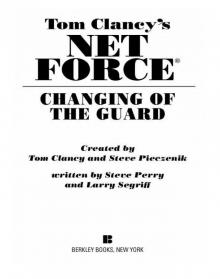 Changing of the Guard
Changing of the Guard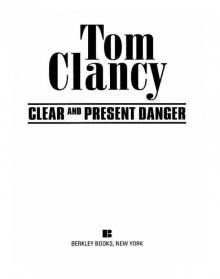 Clear and Present Danger
Clear and Present Danger Hounds of Rome
Hounds of Rome Breaking Point
Breaking Point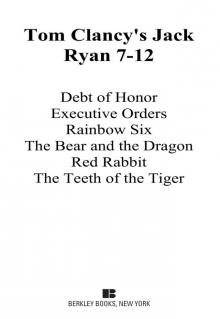 Tom Clancy's Jack Ryan Books 7-12
Tom Clancy's Jack Ryan Books 7-12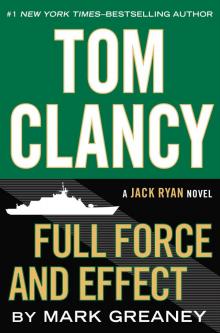 Full Force and Effect
Full Force and Effect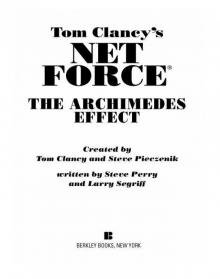 The Archimedes Effect
The Archimedes Effect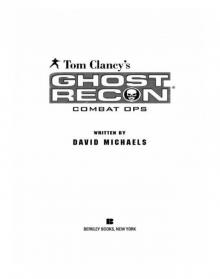 Combat Ops
Combat Ops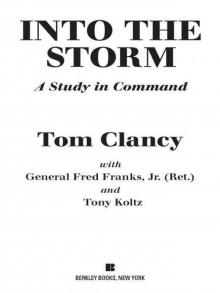 Into the Storm: On the Ground in Iraq
Into the Storm: On the Ground in Iraq Under Fire
Under Fire Point of Impact
Point of Impact Red Rabbit
Red Rabbit Rainbow Six
Rainbow Six The Hunt for Red October
The Hunt for Red October The Teeth of the Tiger
The Teeth of the Tiger Conviction (2009)
Conviction (2009)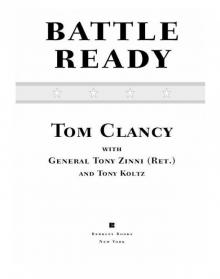 Battle Ready
Battle Ready Patriot Games
Patriot Games The Sum of All Fears
The Sum of All Fears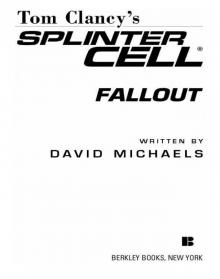 Fallout (2007)
Fallout (2007) Red Storm Rising
Red Storm Rising The Cardinal of the Kremlin
The Cardinal of the Kremlin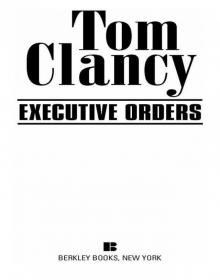 Executive Orders
Executive Orders Lincoln, the unknown
Lincoln, the unknown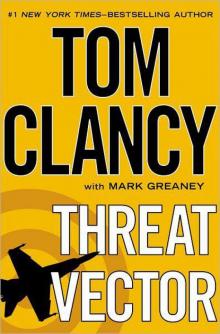 Threat Vector
Threat Vector The Hunted
The Hunted Shadow Warriors: Inside the Special Forces
Shadow Warriors: Inside the Special Forces End Game
End Game Special Forces: A Guided Tour of U.S. Army Special Forces
Special Forces: A Guided Tour of U.S. Army Special Forces Locked On
Locked On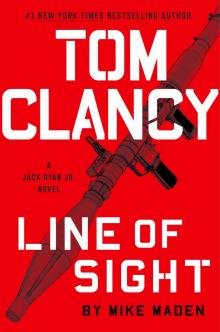 Line of Sight
Line of Sight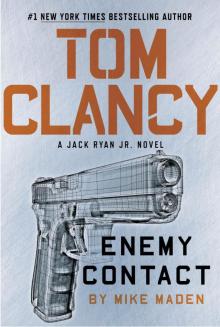 Tom Clancy Enemy Contact - Mike Maden
Tom Clancy Enemy Contact - Mike Maden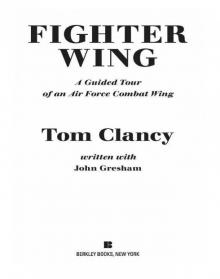 Fighter Wing: A Guided Tour of an Air Force Combat Wing
Fighter Wing: A Guided Tour of an Air Force Combat Wing Springboard
Springboard Line of Sight - Mike Maden
Line of Sight - Mike Maden EndWar
EndWar Dead or Alive
Dead or Alive Tom Clancy Support and Defend
Tom Clancy Support and Defend Checkmate
Checkmate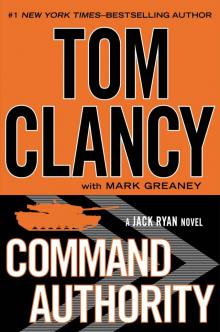 Command Authority
Command Authority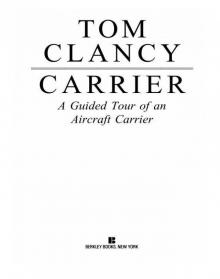 Carrier: A Guided Tour of an Aircraft Carrier
Carrier: A Guided Tour of an Aircraft Carrier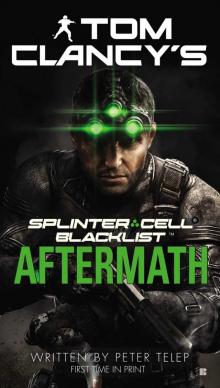 Blacklist Aftermath
Blacklist Aftermath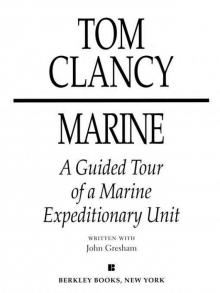 Marine: A Guided Tour of a Marine Expeditionary Unit
Marine: A Guided Tour of a Marine Expeditionary Unit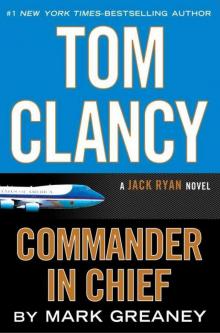 Commander-In-Chief
Commander-In-Chief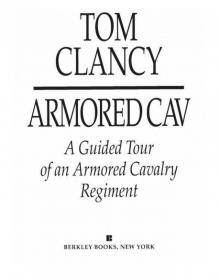 Armored Cav: A Guided Tour of an Armored Cavalry Regiment
Armored Cav: A Guided Tour of an Armored Cavalry Regiment Tom Clancy's Jack Ryan Books 1-6
Tom Clancy's Jack Ryan Books 1-6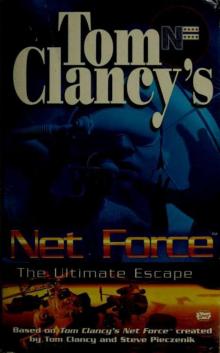 The Ultimate Escape
The Ultimate Escape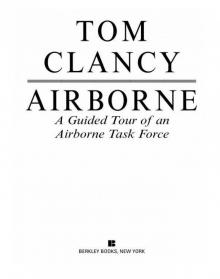 Airborne: A Guided Tour of an Airborne Task Force
Airborne: A Guided Tour of an Airborne Task Force Debt of Honor
Debt of Honor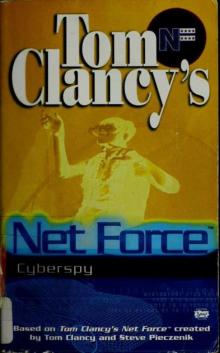 Cyberspy
Cyberspy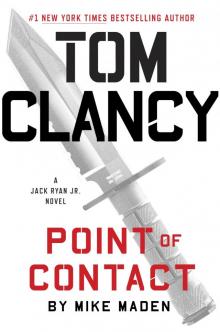 Point of Contact
Point of Contact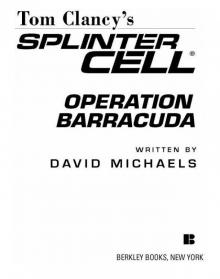 Operation Barracuda (2005)
Operation Barracuda (2005) Choke Point
Choke Point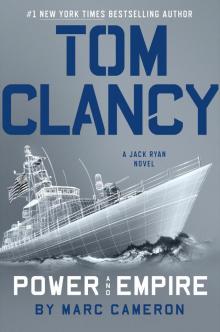 Power and Empire
Power and Empire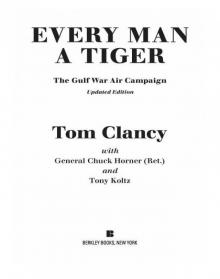 Every Man a Tiger: The Gulf War Air Campaign
Every Man a Tiger: The Gulf War Air Campaign Endgame (1998)
Endgame (1998) EndWar: The Missing
EndWar: The Missing Splinter Cell (2004)
Splinter Cell (2004) The Great Race
The Great Race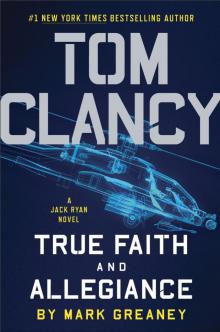 True Faith and Allegiance
True Faith and Allegiance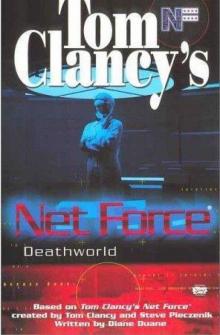 Deathworld
Deathworld Ghost Recon (2008)
Ghost Recon (2008)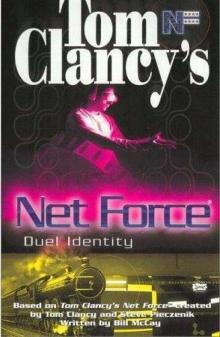 Duel Identity
Duel Identity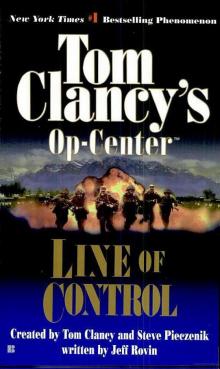 Line of Control o-8
Line of Control o-8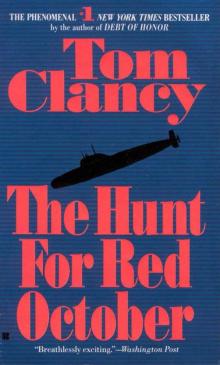 The Hunt for Red October jr-3
The Hunt for Red October jr-3 Hidden Agendas nf-2
Hidden Agendas nf-2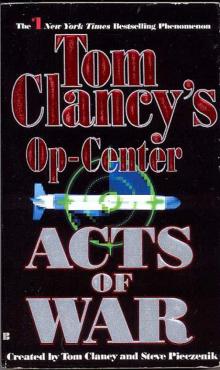 Acts of War oc-4
Acts of War oc-4 Ruthless.Com pp-2
Ruthless.Com pp-2 Night Moves
Night Moves The Hounds of Rome - Mystery of a Fugitive Priest
The Hounds of Rome - Mystery of a Fugitive Priest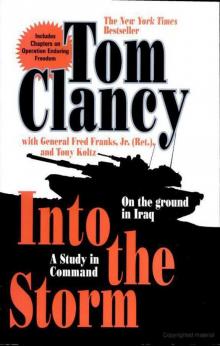 Into the Storm: On the Ground in Iraq sic-1
Into the Storm: On the Ground in Iraq sic-1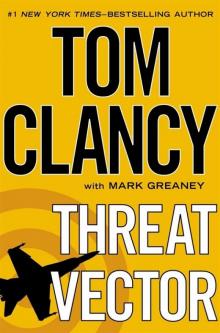 Threat Vector jrj-4
Threat Vector jrj-4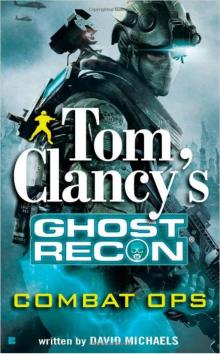 Combat Ops gr-2
Combat Ops gr-2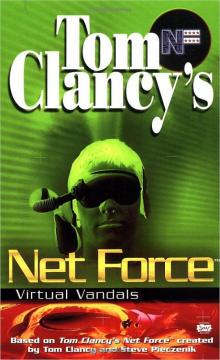 Virtual Vandals nfe-1
Virtual Vandals nfe-1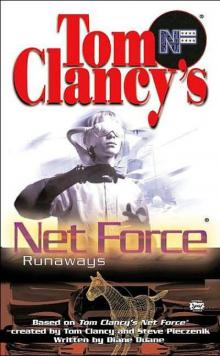 Runaways nfe-16
Runaways nfe-16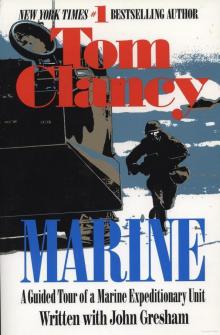 Marine: A Guided Tour of a Marine Expeditionary Unit tcml-4
Marine: A Guided Tour of a Marine Expeditionary Unit tcml-4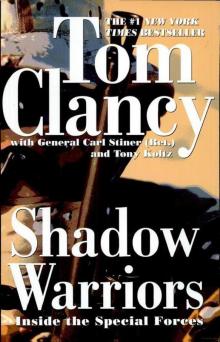 Shadow Warriors: Inside the Special Forces sic-3
Shadow Warriors: Inside the Special Forces sic-3 Jack Ryan Books 1-6
Jack Ryan Books 1-6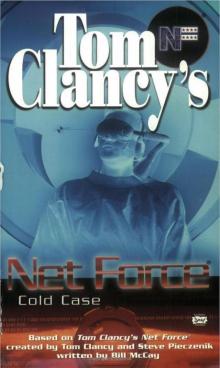 Cold Case nfe-15
Cold Case nfe-15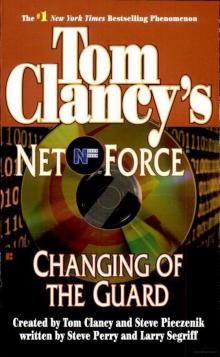 Changing of the Guard nf-8
Changing of the Guard nf-8 Splinter Cell sc-1
Splinter Cell sc-1 Battle Ready sic-4
Battle Ready sic-4 The Bear and the Dragon jrao-11
The Bear and the Dragon jrao-11 Fighter Wing: A Guided Tour of an Air Force Combat Wing tcml-3
Fighter Wing: A Guided Tour of an Air Force Combat Wing tcml-3 Patriot Games jr-1
Patriot Games jr-1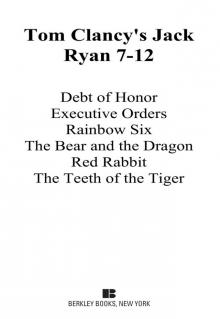 Jack Ryan Books 7-12
Jack Ryan Books 7-12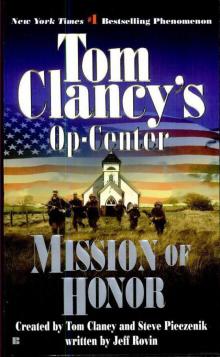 Mission of Honor o-9
Mission of Honor o-9 Private Lives nfe-9
Private Lives nfe-9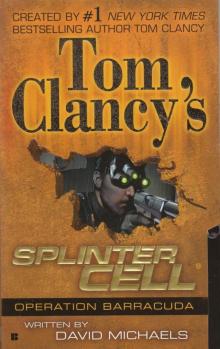 Operation Barracuda sc-2
Operation Barracuda sc-2 Cold War pp-5
Cold War pp-5 Point of Impact nf-5
Point of Impact nf-5 Red Rabbit jr-9
Red Rabbit jr-9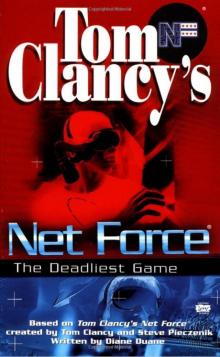 The Deadliest Game nfe-2
The Deadliest Game nfe-2 Springboard nf-9
Springboard nf-9 Safe House nfe-10
Safe House nfe-10 EndWar e-1
EndWar e-1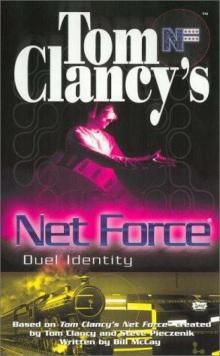 Duel Identity nfe-12
Duel Identity nfe-12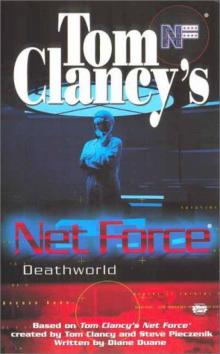 Deathworld nfe-13
Deathworld nfe-13 Politika pp-1
Politika pp-1 Rainbow Six jr-9
Rainbow Six jr-9 Tom Clancy's Power Plays 1 - 4
Tom Clancy's Power Plays 1 - 4 Endgame sc-6
Endgame sc-6 Executive Orders jr-7
Executive Orders jr-7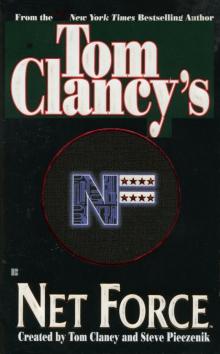 Net Force nf-1
Net Force nf-1 Call to Treason o-11
Call to Treason o-11 Locked On jrj-3
Locked On jrj-3 Against All Enemies
Against All Enemies The Sum of All Fears jr-7
The Sum of All Fears jr-7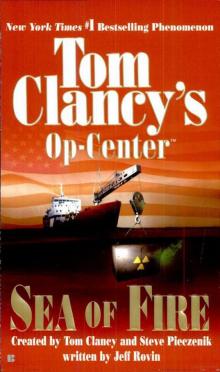 Sea of Fire o-10
Sea of Fire o-10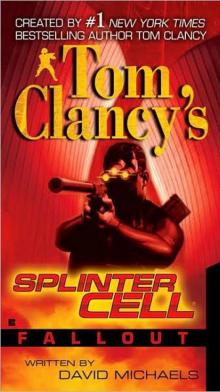 Fallout sc-4
Fallout sc-4 Balance of Power o-5
Balance of Power o-5 Shadow Watch pp-3
Shadow Watch pp-3 State of War nf-7
State of War nf-7 Wild Card pp-8
Wild Card pp-8 Games of State o-3
Games of State o-3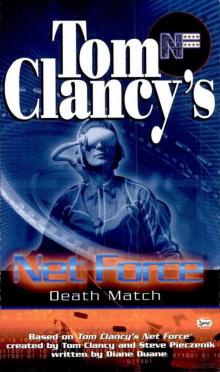 Death Match nfe-18
Death Match nfe-18 Against All Enemies mm-1
Against All Enemies mm-1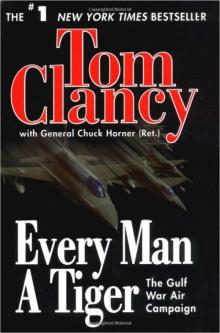 Every Man a Tiger: The Gulf War Air Campaign sic-2
Every Man a Tiger: The Gulf War Air Campaign sic-2 Cybernation nf-6
Cybernation nf-6 Support and Defend
Support and Defend Night Moves nf-3
Night Moves nf-3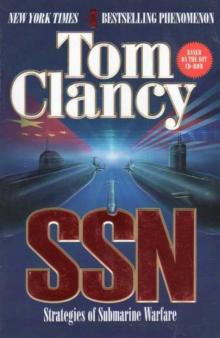 SSN
SSN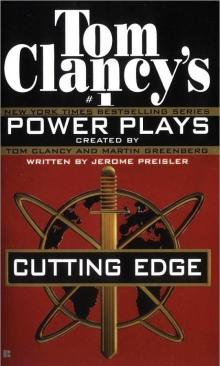 Cutting Edge pp-6
Cutting Edge pp-6 The Cardinal of the Kremlin jrao-5
The Cardinal of the Kremlin jrao-5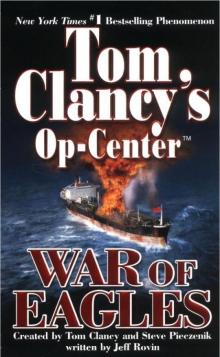 War of Eagles o-12
War of Eagles o-12 Op-Center o-1
Op-Center o-1 Mirror Image o-2
Mirror Image o-2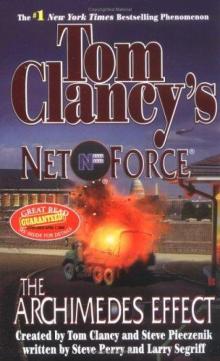 The Archimedes Effect nf-10
The Archimedes Effect nf-10 Teeth of the Tiger jrj-1
Teeth of the Tiger jrj-1 Bio-Strike pp-4
Bio-Strike pp-4 State of Siege o-6
State of Siege o-6 Debt of Honor jr-6
Debt of Honor jr-6 Zero Hour pp-7
Zero Hour pp-7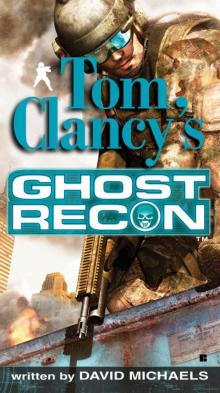 Ghost Recon gr-1
Ghost Recon gr-1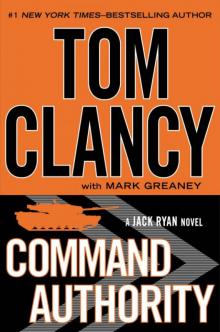 Command Authority jr-10
Command Authority jr-10 Tom Clancy's Power Plays 5 - 8
Tom Clancy's Power Plays 5 - 8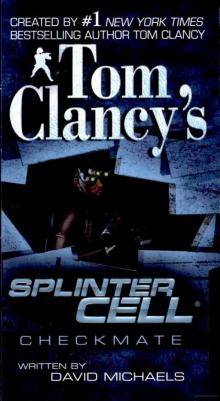 Checkmate sc-3
Checkmate sc-3 Breaking Point nf-4
Breaking Point nf-4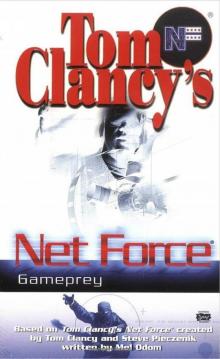 Gameprey nfe-11
Gameprey nfe-11 The Hunted e-2
The Hunted e-2 Hidden Agendas
Hidden Agendas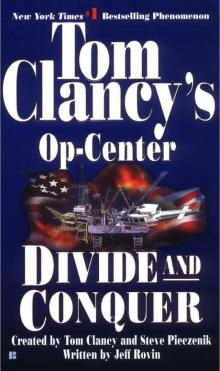 Divide and Conquer o-7
Divide and Conquer o-7